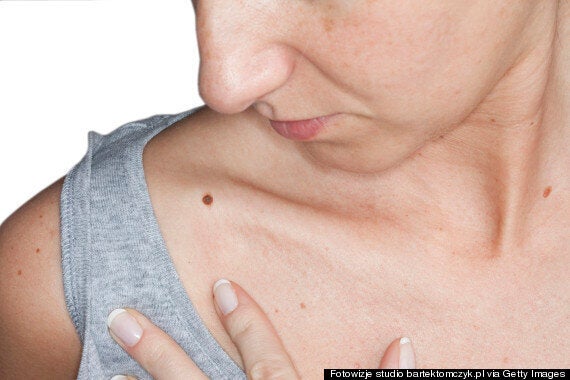A recent study has discovered a link between women who have a lot of moles and an increased risk of breast cancer.
Generally cutaneous nevi, commonly known as moles, are associated with skin cancer.
But a new study found that women with at least 15 of the blemishes were 35% more likely to be diagnosed with breast cancer than those with none.
In terms of "absolute" risk, 11.4% of women with 15 or more moles were likely to develop the disease.
Sex hormones appear to play a role in the link, researchers found. In a sub-group of post-menopausal women, those with six or more moles had higher blood levels of oestrogen and testosterone than women who were mole-free.

The findings emerge from an analysis of about 20 years-worth of data on 74,523 US nurses and 89,902 French teachers.
While numbers of moles could theoretically provide a marker of breast cancer risk, it is unclear how useful this would be in practice, say the researchers.
Story continues below the slideshow:
The study, led by Dr Jiali Han, from Indiana University in the US, is published in the online journal Public Library Of Science Medicine.
The scientists wrote: "These findings support the hypothesis that the number of (cutaneous) nevi reflects sex hormone levels in women and may predict breast cancer risk.
"Notably, they show that the association between breast cancer risk and nevus number was independent of known risk factors for breast cancer, and that the risk of breast cancer increased with the number of nevi in a dose-dependent manner.
"These findings also suggest that a hormonal mechanism underlies the association between nevus number and breast cancer risk."
SEE ALSO:
My Secondary Breast Cancer Treatment: It's Time to Let Nature Take Its Course
When Beth Posted These Images on Facebook, 103 People Unfriended Her
They added: "Because this study is observational, these findings are insufficient to support any changes in clinical recommendations for breast cancer screening or diagnosis. Nevertheless, these data.. support the need for further investigation of the association between nevi and breast cancer risk and of the mechanisms underlying this relationship."
Dr Matthew Lam, senior research officer at the charity Breakthrough Breast Cancer, said: "This study doesn't prove that moles can cause breast cancer, which the research team acknowledge, but there does seem to be an association between number of moles and the risk of developing the disease - potentially caused by the presence of higher levels of sex hormones, a known risk factor for breast cancer.
"Whilst the link is interesting, it's not yet clear how useful asking women to report how many moles they have as part of risk estimation would be given that there are several other, more reliable, risk factors at play such as weight, age, and genes."